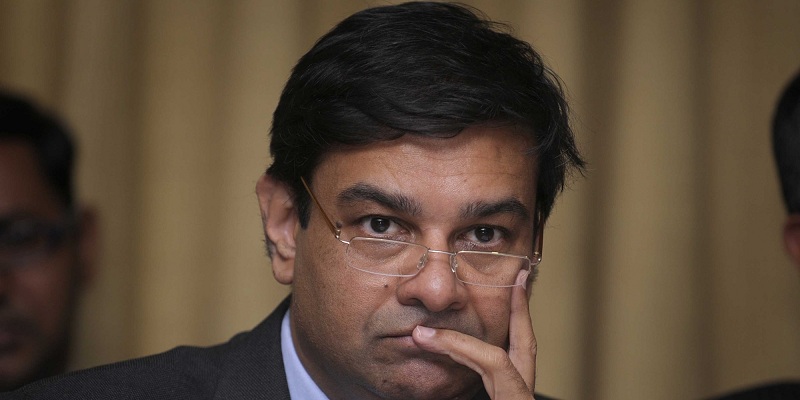The Controller General of Accounts publishes the state of government finance at the end of every month. This data is published with a gap of one month. Hence, on 31st August, the data as of 31st July, was published.
This data, not surprisingly, doesn’t make for a good reading. The fiscal deficit, the difference between what a government earns and what it spends, for the period April to July 2020 stood at Rs 8.21 lakh crore. The fiscal deficit that the government had plans to achieve during the course of the current financial year (2020-21) stands at Rs 7.96 lakh crore. Hence, at the end of July, the actual fiscal deficit of the government was 103.1% of the budgeted one.
But given the state we are in this is hardly surprising. Nevertheless, there are several reasons to worry. Let’s take a look at it pointwise.
1) Tax collections have collapsed. Between April and July 2020, the gross tax revenue, which brings in a bulk of the money for the central government and which it shares with the state governments, is down 29.5% to Rs 3.8 lakh crore, in comparison to the same period in 2019.
Let’s look at the different taxes collected by the government between April and June this year and the last year.
They all fall down

Source: Controller General of Accounts.
As can be seen from the above chart, the collections of all major taxes are down big time.
Take the case of central goods and services tax. (GST) or the part of GST that ends up with the central government. During April to July 2019, the total collections of the central GST had stood at around Rs 1.41 lakh crore. During the same period this year the collections have fallen by 34% to Rs 92,949 crore. Other taxes have fallen along similar lines.
The fall in GST collections is a reflection of a massive slowdown in consumption. A slowdown in consumption ultimately reflects in a slowdown in income of individuals as well as incomes of companies. Ultimately, one man’s spending is another man’s income.
But there is something that the above chart does not show, the excise duty collections of the central government. They are up year on year by 23.8% to Rs 67,895 crore. This despite the fact that the consumption of petroleum products between April and July is down 22.5% in comparison to 2019.
So, how have excise duty collections gone up? The central government has increased the excise duty on petrol from Rs 22.98 per litre to Rs 32.98 per litre. The excise duty on diesel has been raised from Rs 18.83 per litre to Rs 31.83 per litre. Also, a substantial part of this duty is a cess, leading to a situation where the central government does not have to share the revenue earned through the cess with the state governments.
In the process, the central government has captured a bulk of the fall in oil prices.
2) As mentioned earlier, the central government needs to share a part of the money it earns with state governments. Between April and July it shared Rs 1.76 lakh crore with states, against Rs 2 lakh crore, during the same period last year. This is 12% lower, during a time when the states are at the forefront of fighting the covid-epidemic.
The ability of the state governments to raise taxes, after having become a part of the goods and services tax system, is rather limited. Take the case of petrol and diesel. The central government has raised excise duty by such a huge extent that the state governments aren’t really in a position to raise the value added tax or the sales tax on petrol and diesel, which they are allowed to charge, without having to face political repercussions for it.
3) The central government has more ways of raising money than the states. One such way is disinvestment of its stakes in public sector enterprises. This year the government plans to earn a whopping Rs 2.1 lakh crore through this route. The original plan included the plan to sell Air India. Whether that happens in an environment where the airlines business has been negatively rerated in the aftermath of covid, remains to be seen.
The other big disinvestment plan was that of the government selling its stake in the Life Insurance Corporation of India through an initial public offering. There are one too many regulatory hurdles that need to be removed, before a stake in India’s largest insurance company can be sold to investors. Long story short, it looks highly unlikely that the government will get anywhere near earning Rs 2.1 lakh crore this year, through the disinvestment front.
Having said that, the government can always resort to some accounting shenanigans, like getting one public sector enterprise to buy another, and pocketing that money. This is likely to happen in the second half of the year.
Over and above this, the government earns a lot of money from the dividends that it earns from public sector enterprises as well as banks and financial institutions. The target for this year is around Rs 1.55 lakh crore. Public sector banks will continue to remain on a weak wicket through this year, hence, their ability to pay dividends is rather limited.
The only way the government can make good this target is by raiding the balance sheet of the RBI for money. Also, the government is likely to raid the cash balances of public sector enterprises which have them, by asking them to pay special dividends.
4) The money that gets invested into various small savings schemes, which includes schemes like Post Office Savings Account, National Savings Time Deposits ( 1,2,3 & 5 years), National Savings Recurring Deposits, National Savings Monthly Income Scheme Account, Senior Citizens Savings Scheme, National Savings Certificate ( VIII-Issue), Public Provident Fund, KisanVikas Patra and Sukanya Samriddhi Account, net of the redemptions, is a revenue entry into the government budget.
This time it has been assumed that the government will get Rs 2.4 lakh crore through this route. Between April and July, Rs 38,413 crore or just 16% of the targeted money has come in. Last year, during the same period, 38% of a much lower target of Rs 1.3 lakh crore had been achieved. Clearly, this target is also going to be missed.
5) Of course, the government understands this and which is why in early May it increased its borrowing target from Rs 7.8 lakh crore to Rs 12 lakh crore, by more than 50%. The government borrows money to finance its fiscal deficit.
What this means is that the government wants to at least keep the fiscal deficit to around Rs 12 lakh crore. The question is will that happen? Gross tax revenues are already down 30%. Of course, as the economy keeps opening up, this number will look better. Having said that, even if tax revenues are down by 15% as of the end of the year, we are looking at a shortfall of Rs 2.5 lakh crore for the central government. The other big entries of disinvestment and the net-revenue from small savings schemes, are also looking extremely optimistic in the current situation.
Even if the government achieves a fiscal deficit of Rs 12 lakh crore and the economy shrinks by around 10% this year, we will be looking at a central government fiscal deficit of 7% against the targeted 3.5%.
In this scenario, it is now more than likely that the RBI will resort to direct financing of government expenditure by printing money and buying government bonds. The government sells bond to finance its fiscal deficit.
This isn’t to say that the RBI hasn’t printed money this year. It has. But it has chosen to operate through the primary dealers. But the mask might come off in in the time to come and the RBI might decide to buy bonds directly from the government.
Winter and money printing are coming to India, in a few months.





















